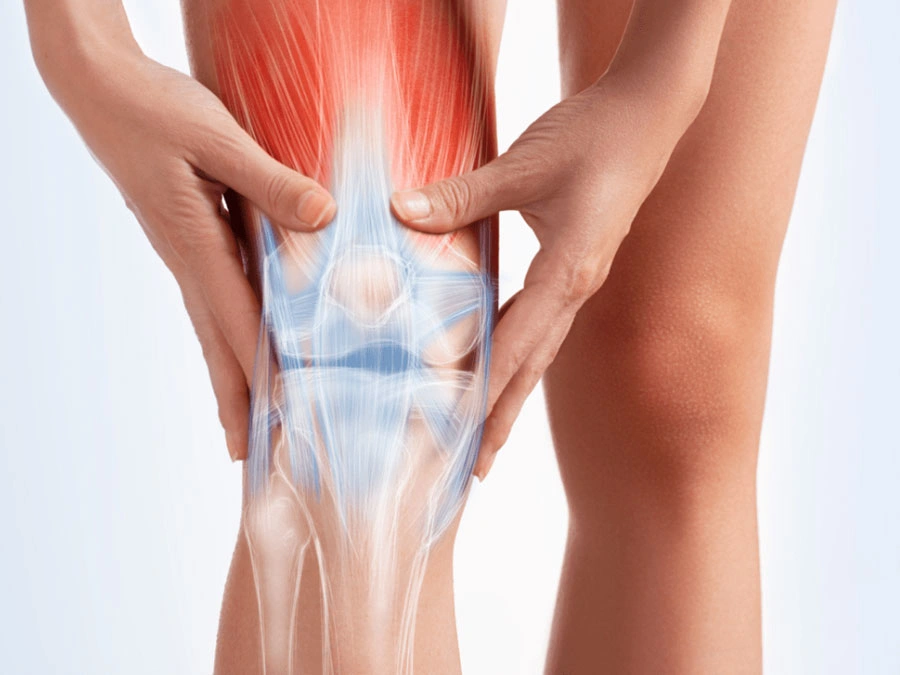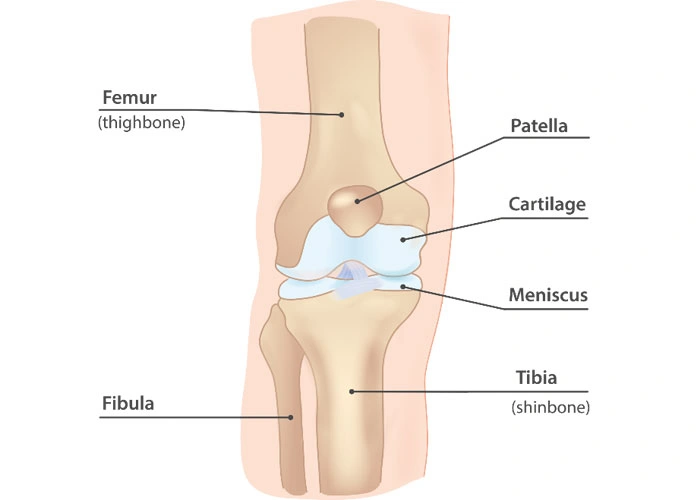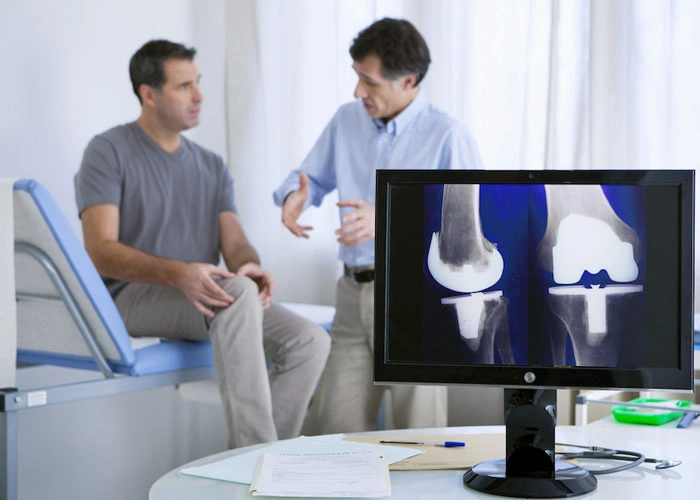- Knee Joint Anatomy
The knee joint is the biggest and most complicated in the human body. It is of the condylar type and is placed between the femur and the tibia. The knee is a large synovial joint that has three surfaces: two superficial surfaces between the femur and tibia for weight bearing and another superficial surface between the patella and thigh for maximum mechanical performance. Articular cartilage covers these surfaces. A flexible and thin joint capsule surrounds the knee joints.
- Symptoms and causes of knee osteoarthritis
Osteoarthritis is one of the most prevalent chronic conditions. This condition affects many joints, with the knee being particularly vulnerable due to the body’s frequent and significant weight bearing. Patients with knee osteoarthritis experience pain, reduced range of motion, decreased stability, and stiffness, which adversely impact their daily lives. Osteoarthritis is a multifactorial and progressive condition that causes considerable financial burdens globally each year. The World Health Organization has listed this disease as one of the most important health-treatment issues among all countries. According to the criteria of the American College of Rheumatology, having pain while walking on the surface and pain or stiffness during the last month indicates that a person feels osteoarthritis of the knee. According to the World Health Organization, this illness is among the most significant health care concerns in all nations. Based on the American College of Rheumatology criteria, discomfort when walking on the surface, as well as pain or stiffness during the previous month, suggest that a person has knee osteoarthritis.
- Knee osteoarthritis epidemiology
The constant factors of disease are mainly systemic. They consist of menopausal physiological changes, age, gender, and genes. As reported by studies, this condition affects 18% of women and 9% of men over 65. In addition, twin research estimated a genetic contribution of 39–65%. Intervening factors that lead to the occurrence and progression of osteoarthritis of the knee are physical and occupational activities.
- Treatment methods for knee osteoarthritis
It’s crucial for one to understand that osteoarthritis cannot be cured, which means that new cartilage cannot be generated following cartilage injury. When the condition progresses, surgery becomes the only option to manage pain and the patient’s function. Non-surgical methods for osteoarthritis can take a pharmacological or physical approach. Drug treatment is carried out by the therapist, taking into account other underlying diseases of the patient, and nonsteroidal anti-inflammatory drugs are the most common type. Physiotherapy, weight reduction, water and land workouts, braces, canes, insoles, electrical or ultrasonic stimulation, and mechanical vibration are a few examples of physical therapy techniques.
As a result, the best strategy to manage osteoarthritis is for the patient to halt its development as soon as it is detected and in the early stages of the illness. Making adjustments to one’s lifestyle, losing weight, and strengthening one’s muscles can slow down the advancement of the condition.
- Jang, S., K. Lee, and J.H. Ju, Recent Updates of Diagnosis, Pathophysiology, and Treatment on Osteoarthritis of the Knee. International journal of molecular sciences, 2021. 22(5): p. 2619.
- Jackson, B., et al., Reviewing knee osteoarthritis—a biomechanical perspective. Journal of Science and Medicine in Sport, 2004. 7(3): p. 347-357.




